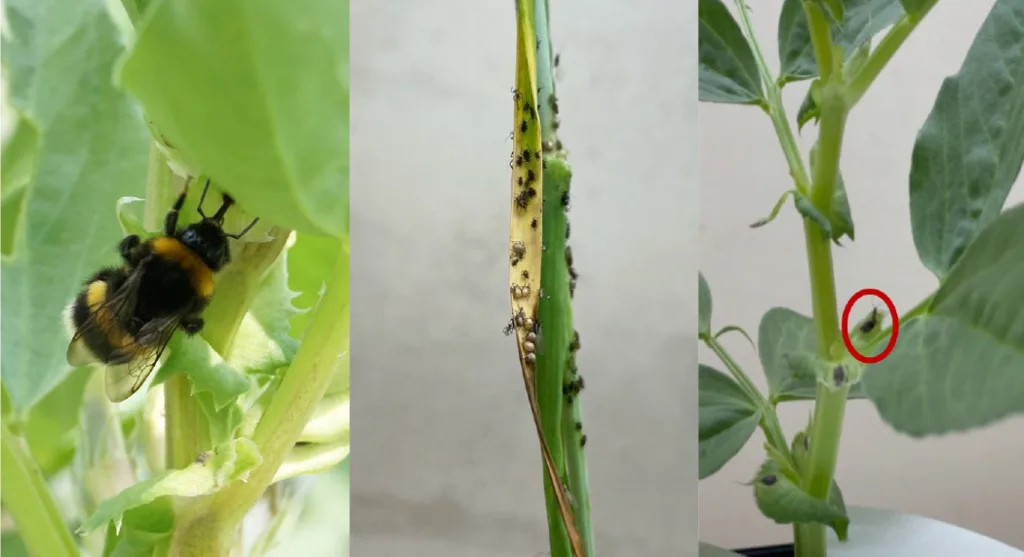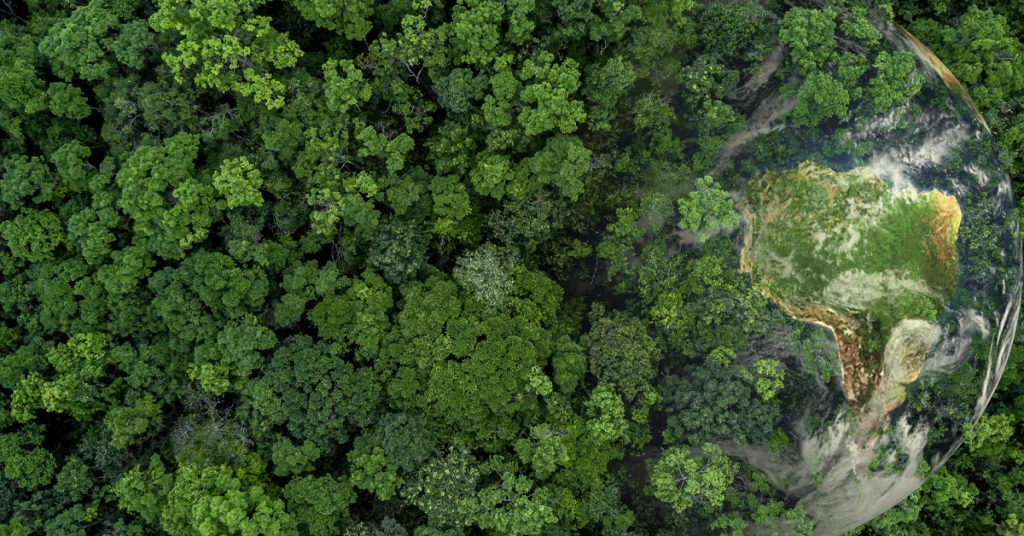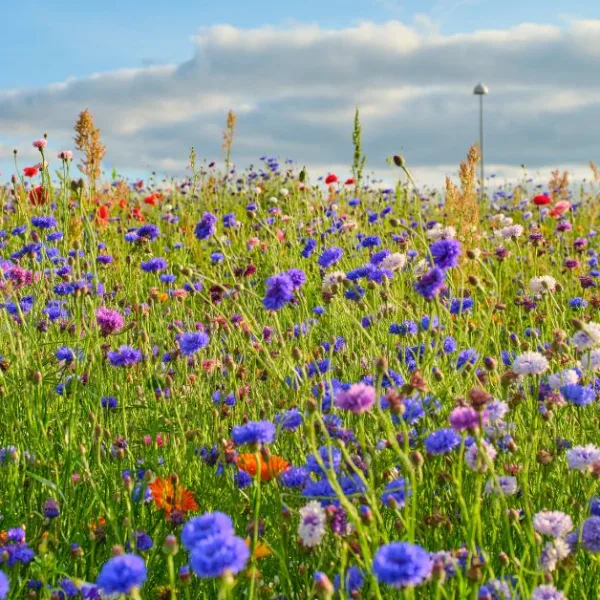I grew up on an intensive arable farm in England, and it mattered to me, and all of us, that the farm looked neat and tidy. We’d start work at 7.30am, but always meet 15 minutes earlier to plan the day – and to critique the neighbouring farms: where one neighbour hadn’t drilled (sown) their wheat in straight lines, or where another had too many weeds in their sugar beet. A neat field was something to be proud of: a neat field was a good field.
But we were wrong. Now, it is the perfect uniform fields I critique. Clean crops provide a field day for agricultural pests, and the impact of pests – if we maintain current farming practices – are likely to get worse with climate change. This risks the use of more insecticides; wasting money and damaging biodiversity. We’re addressing this at the University, but not through finding ways to directly kill pests, but instead exploring how we can change farming techniques so that pests won’t be a problem in future
warmer climates.
Are insects a problem?
Most insect species are benign to farmers: of the million plus insect species, only one to two per cent are pests. But those few species can cause havoc, wrecking farmer finances and threatening food security. Key to pest insects’ success is their rapid population growth. For example, aphids (the plant’s mosquito – causing little direct damage but with a devastating ability to spread disease) reproduce through telescoping their generations1: daughters are born pregnant with their own daughters so some species are doubling their population in three days. One aphid, weighing a thousandth of a gram, can reproduce to a population with a biomass greater than all humanity within six months.

Will climate change make insect pests worse?
Climate change may exacerbate current problems. Insect damage arises through weight of numbers, and as ectotherms (cold-blooded organisms), insects respond rapidly as temperatures warm.2
Therefore, we can expect faster growth, more generations per year and extended ranges in a warmer world – climate change is likely to be ‘good’ for pests under current farming
models.
Why not stick with what’s worked for 70 years?
For seven decades yields have risen through new varieties, irrigation, fertilisers and pesticides – but the system is no longer fit for purpose. Regulators are restricting the most hazardous pesticides due to their impact on biodiversity and human health (to the chagrin of some), and pests evolve resistance at alarming speed. For example, the diamondback moth – a global pest of brassicas – evolved resistance to DDT in less than a decade, and is now resistant to almost all types of insecticide. Climate change will accelerate resistance, as faster life cycles enable faster evolution of resistance, decreasing pesticide efficiency.
If ecologists designed agriculture, they wouldn’t start from here
Currently, most of our calories come from monocultures, whole fields of a single crop. Ecologically this is bonkers, as if designed to favour pests: for pests, monocultures offer endless food. In natural ecosystems, pest populations are kept in check as insects struggle to find food in complex environments, and through predation by natural enemies. In agricultural monocultural ecosystems, pest populations are kept in check through applying insecticides – at the expense of human health3 and biodiversity4.
Why more mess means fewer pests
Many natural enemies need nectar as fuel to help them find their prey – our pests. But clean fields of wheat, rice or maize contain no nectar. Our PhD student Nurainie Wan Ismail is working with parasitoids, tiny flying insects. These lay eggs inside the pest and eat them inside-out: horrible but highly effective pest control. But these excellent pest controllers can only find their prey when they’ve got fuel from nectar. With Nurainie we’ve found that adding another crop – such as field beans – substantially increases how long parasitoids can live, and how many pests they can kill. And it’s not just natural enemies that benefit from the more complex fields. Our research5 highlights the potential of complex cropping systems to increase biodiversity and yields too – and this becomes especially important as the climate changes.
Why are so many farms still clean?
Uncontrolled weeds have always been, and remain, a major problem for farms, and so farmers react negatively when we suggest that their fields should be messier – even though we’re suggesting a managed mess, which will improve yields. Also, many people still don’t know about parasitoids, while vital, they’re easy to miss! But most importantly, for decades this research has been swamped by that of pesticide companies, as it’s impossible to patent intercropping.
However, over recent years we’re finding that farmers are rapidly adopting alternative techniques, especially since the neonicotinoids ban, and so we’re excited that our research will soon be used in the field – improving human and environmental health in the face of climate change.

COP and the University of Edinburgh
Explore how we’re mobilising research and innovation to turn pledges into progress.
This article was first published in the COP30 Advancing Action Brochure on 10 November 2025.
Photo credits: Feature image field of crops, Getty Images/Westend61, bumblebee: Barbara Smith, aphids and parasitoid: Nuraine Wan Ismali
- Living inside your grandmother – the wonderful world of aphids ↩︎
- Scientists’ warning on climate change and insects ↩︎
- How many premature deaths from pesticide suicide have occurred since the agricultural Green Revolution? ↩︎
- Worldwide decline of the entomofauna: A review of its drivers ↩︎
- Impacts of polycultural cropping on crop yields and biodiversity: A systematic map protocol ↩︎





